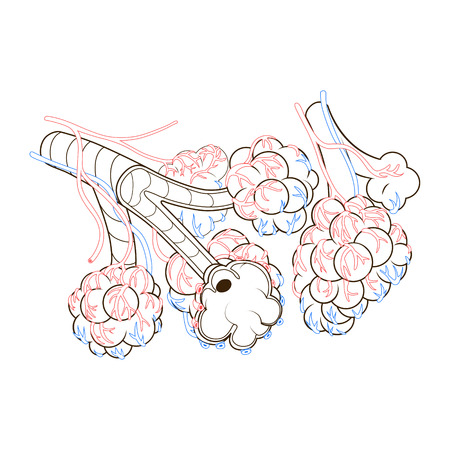Introduction to Hand Conditions in the U.S.
The hands and wrists are essential for almost every daily activity, from typing on a computer to cooking dinner or playing with your kids. Unfortunately, many people across the United States experience hand and wrist problems that can make even simple tasks challenging. These conditions not only cause pain and discomfort, but can also impact work performance, social life, and overall quality of life.
Overview of Common Hand and Wrist Conditions
In the U.S., some of the most frequently diagnosed hand and wrist issues include carpal tunnel syndrome, tendonitis (like De Quervain’s tenosynovitis), trigger finger, osteoarthritis, and repetitive strain injuries. Each condition has its own set of symptoms and risk factors, but all can interfere with daily living if not managed properly.
Prevalence and Risk Factors
| Condition | Prevalence | Main Risk Factors |
|---|---|---|
| Carpal Tunnel Syndrome | Affects 3-6% of adults | Repetitive hand use, pregnancy, diabetes, obesity |
| Tendonitis | Common among active adults | Overuse, repetitive motion, age over 40 |
| Osteoarthritis | Affects up to 10% of adults over 60 | Aging, prior joint injury, genetics |
| Trigger Finger | More common in women & people with diabetes | Repetitive gripping, inflammation, diabetes |
Impact on Daily Living
Hand and wrist conditions can affect everything from buttoning a shirt to using a smartphone. Many people report trouble sleeping due to pain or numbness at night. For those who rely on their hands for work—such as office workers, healthcare professionals, or factory employees—these issues can lead to missed days or even job changes.
The Importance of Evidence-Based Interventions
With so many Americans affected by these conditions each year, finding effective ways to prevent and treat them is crucial. Evidence-based interventions use the latest research to guide treatment decisions. This approach ensures that patients receive care that is proven to work—helping them return to their daily routines faster and reducing long-term complications.
2. Carpal Tunnel Syndrome: Assessment and Best Practices
Understanding Carpal Tunnel Syndrome (CTS)
Carpal Tunnel Syndrome is a common condition that affects the hand and wrist, often causing numbness, tingling, and weakness. It happens when the median nerve, which runs through the carpal tunnel in your wrist, gets compressed. CTS is especially common in people who do repetitive hand movements or use computers for long periods.
Evidence-Based Evaluation of CTS
Proper diagnosis is key to effective treatment. Healthcare providers use a combination of patient history, physical exams, and sometimes nerve tests. Here are some common assessment tools:
| Assessment Tool | Description |
|---|---|
| Tinel’s Sign | Tapping over the median nerve to see if it causes tingling in the fingers. |
| Phalen’s Test | Bending the wrists to check if symptoms appear within 60 seconds. |
| Nerve Conduction Studies (NCS) | A test to measure how fast electrical signals move through the median nerve. |
Best Practice Guidelines for Managing CTS
Treatment depends on symptom severity and personal needs. Evidence-based guidelines from organizations like the American Academy of Orthopaedic Surgeons (AAOS) suggest starting with conservative approaches before considering surgery.
Conservative Treatment Options
- Wrist Splinting: Wearing a splint at night helps keep your wrist straight and relieves pressure on the nerve.
- Activity Modification: Taking breaks from repetitive tasks and changing hand positions can reduce symptoms.
- Physical Therapy: Hand therapists may teach exercises to stretch and strengthen the wrist and hand muscles.
- Nonsteroidal Anti-inflammatory Drugs (NSAIDs): Over-the-counter medications like ibuprofen may help manage pain and inflammation.
- Corticosteroid Injections: Sometimes, an injection can provide temporary relief if other treatments haven’t helped.
Surgical Options
If symptoms are severe or don’t improve with conservative care, surgery may be considered. The most common procedure is carpal tunnel release, which relieves pressure on the median nerve by cutting the ligament pressing on it. Recovery times vary but most people regain function within weeks to months.
| Treatment Option | When Its Recommended | Main Benefit |
|---|---|---|
| Conservative Care | Mild-to-moderate symptoms; early stages of CTS | Avoids surgery; low risk; can be effective for many people |
| Surgery (Carpal Tunnel Release) | Severe symptoms; muscle weakness; failed conservative care | Long-term symptom relief; restores hand function in most cases |
Return-to-Work Considerations
A big part of managing CTS is helping people safely return to work. Therapists work with patients and employers to adjust job duties, provide ergonomic advice, and set up gradual return-to-work plans. This might include:
- Pacing activities and taking regular breaks during repetitive tasks.
- Using ergonomic keyboards or mouse devices.
- Modifying workstations to keep wrists in a neutral position.
- Gradually increasing workload as symptoms improve.

3. Tendonitis and Overuse Injuries: Interventions That Work
Tendonitis and overuse injuries are common hand problems, especially for people who work at computers, use tools, or play sports regularly. These issues can cause pain, swelling, and reduced function in the wrist and hand. The good news is that there are evidence-based strategies that really help—especially when tailored to daily life and work habits in the U.S.
Ergonomic Strategies for American Lifestyles
Making simple changes in your work or recreation setup can make a big difference. Ergonomics means adjusting your environment to fit you better, reducing strain on your hands and wrists. For example, if you type a lot or use a mouse all day, here’s what works:
| Setting | Recommended Ergonomic Change |
|---|---|
| Office Desk (Computer Use) | Use an adjustable chair with armrests, keep wrists straight with a padded keyboard rest, place mouse close to keyboard |
| Manual Work (Construction, Mechanics) | Choose tools with padded handles, use wrist supports, take regular breaks to stretch |
| Recreational Sports (Golf, Tennis) | Warm up before activity, use proper grip technique, consider wearing supportive braces during play |
Activity Modification: Pacing Your Hands
Pacing is key! Try breaking up long periods of repetitive hand movements with short rests or by switching activities. If your job involves lots of typing or assembly line work, set a timer every 30-60 minutes as a reminder to stop and stretch.
Practical Tips for Activity Modification
- Alternate tasks: Mix heavy tasks with lighter ones throughout your day.
- Use both hands: Share the workload between left and right hands whenever possible.
- Avoid “power gripping”: Don’t squeeze tools or objects harder than necessary.
Splinting: Giving Your Tendons a Break
Splints can support your wrist and reduce tendon irritation. For tendonitis, a soft wrist brace or splint is often recommended during painful activities or at night. It’s important not to overuse splints—using them only when needed helps prevent stiffness.
| When to Use Splints | Type of Splint | Main Benefit |
|---|---|---|
| During sleep (nighttime) | Soft wrist brace | Keeps wrist in neutral position for healing |
| During repetitive work tasks | Cock-up splint or support wrap | Lowers strain on tendons during use |
| Sporadically for pain flare-ups | Flexible compression sleeve | Eases discomfort without limiting movement too much |
Therapeutic Exercises for Hand and Wrist Tendonitis
Gentle exercises help restore flexibility and strength. Here are some commonly recommended moves for Americans dealing with tendonitis from office jobs, crafts, or sports:
- Tendon Glides: Move fingers through full range of motion (straighten and curl fingers slowly).
- Wrist Flexor Stretch: Hold arm out with palm up; gently pull fingers back with other hand until you feel a stretch.
- Eccentric Strengthening: Use a light dumbbell or soup can; slowly lower weight from bent to straight wrist position.
- Nerve Glides: Carefully move hand and wrist through positions that gently stretch nerves alongside tendons.
Exercise Safety Tips:
- If an exercise causes sharp pain, stop right away.
- A little soreness is okay—sharp or shooting pain is not.
- Aim for 5-10 repetitions once or twice daily unless otherwise advised by your healthcare provider.
- If you’re unsure how to perform these exercises correctly, ask an occupational therapist or physical therapist experienced with hand injuries.
4. Beyond the Basics: Trigger Finger, De Quervain’s, and Other Common Hand Issues
When it comes to hand pain and dysfunction, conditions like carpal tunnel syndrome and tendonitis often get the spotlight. However, many people experience other common issues such as trigger finger and De Quervain’s tenosynovitis. These problems can be just as disruptive to daily life—think about trouble gripping your morning coffee or texting on your phone. Let’s explore the most up-to-date, evidence-based interventions for these frequent hand conditions, see how they differ from each other, and review what current research recommends for effective treatment.
Trigger Finger (Stenosing Tenosynovitis)
What is it? Trigger finger happens when the flexor tendons in your fingers get irritated and swollen, making it hard to straighten or bend the finger smoothly. Sometimes the finger catches or locks in place.
Evidence-Based Treatments
| Treatment | Description | Level of Evidence |
|---|---|---|
| Splinting | Wearing a splint to keep the finger straight, usually at night. | Strong (multiple studies show effectiveness) |
| Corticosteroid Injection | A local injection to reduce inflammation around the tendon sheath. | Very strong (first-line treatment per American Academy of Orthopaedic Surgeons) |
| Therapy/Stretching | Hand therapy exercises to improve flexibility and decrease irritation. | Moderate (helpful for mild cases or combined with other treatments) |
| Surgery | Releasing the tendon sheath if conservative measures fail. | Reserved for persistent cases; high success rates reported |
De Quervain’s Tenosynovitis
What is it? This condition causes pain on the thumb side of your wrist, especially when pinching, grasping, or turning objects like a doorknob. It often affects new parents (“mommy thumb”) and people with repetitive thumb movements.
Evidence-Based Treatments
| Treatment | Description | Level of Evidence |
|---|---|---|
| Thumb Spica Splinting | A splint supports the thumb and wrist, reducing movement and irritation. | Strong (frequently recommended as initial management) |
| Corticosteroid Injection | A targeted injection to relieve inflammation in the tendon sheath. | Very strong (high success rate in clinical trials) |
| Activity Modification/Education | Changing repetitive hand movements; ergonomics coaching by a therapist. | Moderate (effective when combined with splinting/injection) |
| Surgery | Surgical release of the tendon sheath in severe or unresponsive cases. | Effective for chronic cases; generally a last resort |
Other Frequent Hand Conditions: Quick Overview of Evidence-Based Care
| Condition | Main Symptoms | Treatment Highlights (Evidence-Based) |
|---|---|---|
| Dupytren’s Contracture | Painless thickening and tightening of tissue under the skin in the palm, causing bent fingers | Xiaflex enzyme injections (FDA-approved), needle aponeurotomy, surgery for severe cases |
| Mallet Finger | Drooping fingertip after injury | Splinting continuously for 6-8 weeks; surgery rare |
| Ganglion Cyst | Lump on wrist or finger joints | Aspiration if painful, observation if not bothersome; surgical removal if recurrent |
The Takeaway from Recent Clinical Guidelines:
Treatments for common hand issues are most successful when tailored to your specific diagnosis and lifestyle needs. Splinting, activity modification, targeted injections, and therapy are widely supported by research as first-line options. Surgery is generally reserved for cases that don’t respond to more conservative care. If you’re dealing with hand pain or stiffness that won’t go away, talk with a certified hand therapist or orthopedic specialist—they can help you choose an evidence-based plan that fits your daily routine and long-term goals.
5. Rehabilitation, Patient Education, and Community Resources
The Role of Multidisciplinary Rehabilitation
Effective recovery from common hand conditions like carpal tunnel syndrome and tendonitis often involves a multidisciplinary rehabilitation team. This team may include physical therapists, occupational therapists, hand therapists, and physicians who work together to create personalized treatment plans. Their combined expertise helps address pain, improve function, and prevent recurrence.
Multidisciplinary Team Members and Their Roles
| Professional | Role in Hand Rehabilitation |
|---|---|
| Physical Therapist (PT) | Guides exercises to restore movement and strength |
| Occupational Therapist (OT) | Helps adapt daily activities and recommends adaptive tools |
| Hand Therapist (CHT) | Specializes in complex hand therapy techniques and splinting |
| Physician (MD/DO) | Diagnoses conditions and manages medical treatments |
Culturally Relevant Patient Education
Education is key for long-term success. Patients in the U.S. come from diverse backgrounds, so using culturally sensitive language and examples helps everyone understand their condition and treatment options. This includes providing materials in multiple languages and respecting personal beliefs about health care. In-person demonstrations, easy-to-understand videos, and printed handouts all support learning.
Patient Education Strategies in the U.S.
- Using plain English or offering translations for non-native speakers
- Sharing real-life stories that reflect American lifestyles (such as computer work or sports injuries)
- Encouraging questions during appointments to build trust and engagement
- Explaining insurance coverage and how to access therapy services locally
Connecting with Community Resources
Beyond clinical care, connecting individuals to community resources is crucial for ongoing support. Many organizations in the U.S. offer support groups, workplace accommodations under the Americans with Disabilities Act (ADA), and access to adaptive equipment.
Key U.S.-Based Support Resources for Hand Conditions
| Resource Type | Description & Example Organizations |
|---|---|
| Support Groups | Online forums like Carpal Tunnel Support Group on Facebook; local hospital-based peer groups |
| Workplace Accommodations (ADA) | Job Accommodation Network (JAN) provides guidance on ergonomic tools, flexible schedules, and workplace modifications under ADA protections |
| Adaptive Equipment Suppliers | National Rehab offers wrist supports, ergonomic keyboards, adaptive utensils, etc. |
| Nonprofit Organizations & Advocacy Groups | American Society for Surgery of the Hand (ASSH) offers educational resources and connects patients with specialists nationwide |
Summary of Practical Tips for Patients in the U.S.
- Ask your doctor or therapist about joining a hand-specific support group—many meet virtually!
- If you have trouble at work due to hand pain, talk to Human Resources about ADA accommodations.
- Try adaptive devices (like ergonomic mouse or jar openers) available at most big box stores or online retailers in the U.S.
- Don’t hesitate to seek help from a rehabilitation team—teamwork leads to better outcomes!


